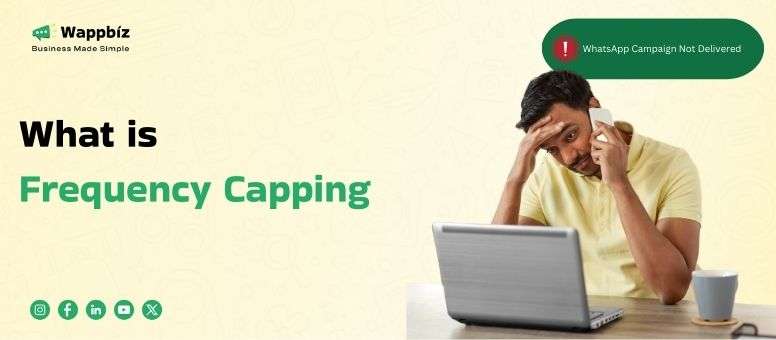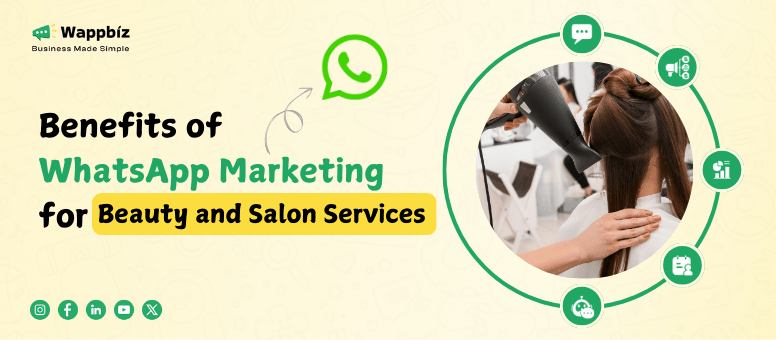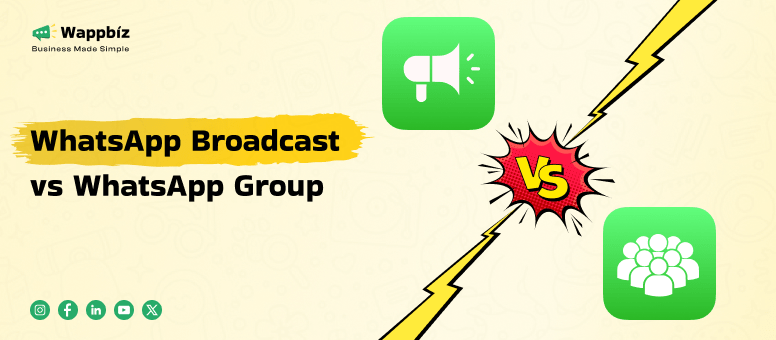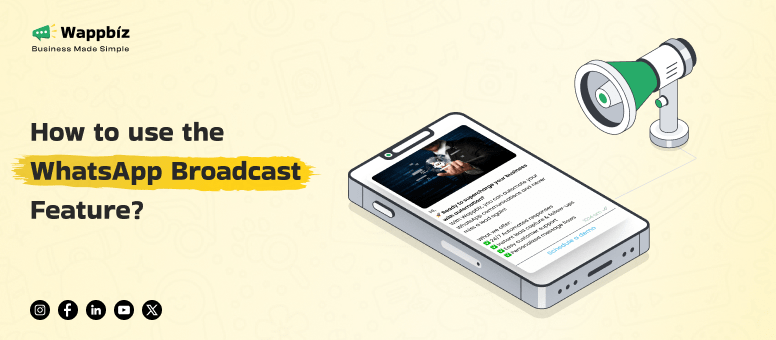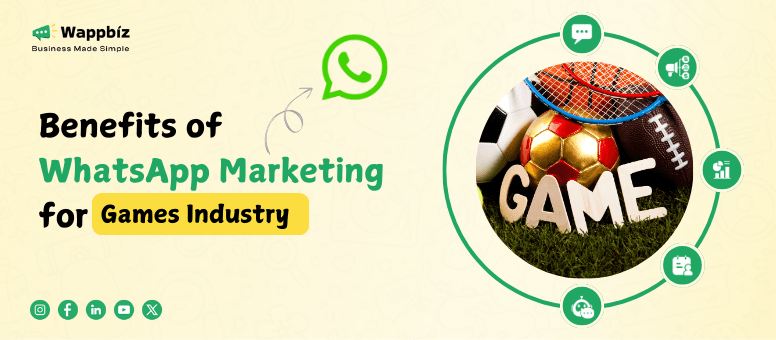Like everything in life, you have to find the right balance between engagement and oversaturation. Using frequency capping to better control the messaging frequency helps businesses follow best practice guidelines in user communications. This approach results in a better customer experience, less message fatigue, and better overall campaign performance, which makes it indispensable, especially in channels like WhatsApp marketing.
Here’s an update for businesses utilizing the WhatsApp Business API for marketing and promotions. Meta, the company behind WhatsApp Business APIs, has introduced a new feature called Frequency Capping. This addition will impact the way businesses communicate, prompting a reassessment of their outreach strategies to target audiences.
What is Frequency Capping?
Frequency capping is the act of controlling how many times a single user sees a single ad in a given amount of time. It helps to prevent the audience from being pounded with similar ads over and over again resulting in ad fatigue, lack of engagement or worse, negative perception on the brand. Meta’s AI-powered ad delivery system enables businesses to manage ad exposure while still improving conversion rates.
Why Did Meta Introduce it?
To avoid ad fatigue, Meta has incorporated ‘frequency capping,’ providing a better and an interactive ad experience. This is a move to ensure user interest, avoid repetitive ads wasted budget and that advertisers reach the audience in question. It also provides a response to changing privacy standards, helps optimize campaign performance, and enables advertisers to level the playing field. Frequency capping ultimately improves user satisfaction and ad effectiveness across Meta’s platforms.
Who all are being affected?
While Meta’s frequency capping mainly affects advertisements, it also applies to regular messages, providing users with a more balanced experience while optimizing user engagement. However, some limitations are set for businesses using WhatsApp Business API accounts and chatbots or automated messaging, where message frequency may be regulated in order to prevent spam and maintain the quality of messages in a user’s feed. Although individual messages will not be affected, companies have to comply with Meta’s messaging policies, quality ratings, and compliance guidelines in order to avoid disruptions. This practice helps improve user confidence, avoid over-messaging, as well as fits better into Meta’s large initiative of enabling a level-playing field and efficient ecosystem.
What are the challenges that you will face in?
Meta has introduced user frequency capping which comes with various challenges for advertisers, businesses, and marketers depending on digital campaigns. Some key challenges include:
Less Ad Exposure:- With restrictions on how often ads show up in a feed, brands may find it hard to stay top of mind and so will need to be more targeted and creative in how they reach your audience.
Increased Competition :- As Frequency Capping contributes to a more equitable ad delivery method, competing for limited impressions becomes vital for the business and bidding strategies play an essential role.
Consequences for Automated Messaging:- Organizations that use WhatsApp Business API, chatbots, and broadcast messaging must mitigate the pace of messages so as not to fall under regulatory consequences that may lead to the limiting ability to contact customers.
Finding the Balance:- Marketers must ensure that frequency of message is no greater than the time the user has available to engage with the messages.
Ad fatigue vs recall:- frequency capping is an effective method to prevent ad over-exposure, however, this can weaken brand recall, forcing the business to package messaging into fewer instances, making far more impactful, high-valuable messaging.
Adapting to Meta’s AI and Policies:- As Meta constantly improves its advertising algorithms and guidelines, companies will need to be vigilant and fine-tune their strategies to meet changing criteria.
Data and Analytics Challenges:- Frequency capping alters how businesses measure ad success, making data-driven insights into conversion, engagement, and customer behavior essential to optimizing ad spend.
In order to overcome these obstacles, audience segmentation needs to be stronger and creative storytelling along with more strategic ad placements to make the most of the impact without oversaturation beyond frequency caps.
How to Meet the Challenges of Meta Frequency Capping?
When dealing with Meta frequency capping, one must navigate a strategic interplay of engagement, ad performance, and compliance. Here are the main solutions to solve these problems successfully:
- Optimise Targeting of Audience: Refine the delivery of ads with custom and lookalike audiences.
- Use Dynamic Creatives: Use underperforming ad creatives as tests against competitors, and then test multiple creatives in bulk⏤filtering them by performance in real time.
- Improve Bidding Strategies: Optimize your adspends on campaigns and automated bidding
- Whatsapp Marketing Automation: Schedule your messages and use automation smartly!
- Use Data Analytics: Track CTR, conversions, and customer engagement.
- Majority of advertisers are targeting Cross-Platform ads: With the underlying factor to balance the ad exposure across Meta’s platforms.
- Stick to Meta’s Policies: Advertisements and privacy policies are a moving target.
Understanding frequency capping in WhatsApp marketing
Frequency capping refers to the limitation on how often a particular message, ad, or notification is delivered to a user within a defined timeframe. Meta’s update ensures that businesses do not overwhelm their audience with excessive promotional messages, ultimately improving customer experience and engagement.
How does frequency capping affect WhatsApp marketing?
There has been a lot of changes in how businesses run WhatsApp marketing campaign with the Meta’s update. Here, we will discuss the big ones:
- Less Affordable Mass Communication
Previously, businesses could use WhatsApp bulk messaging to effectively target so many people at once. However, with frequency capping in effect, organizations need to focus more on message relevance rather than volume as all are living under a restriction.
How to Adapt:
- Use WhatsApp analytics to measure engagement and improve the send rate.
- Leverage segmentation and personalization to drive relevance.
- Improve structured engagement with WhatsApp flow
2. Using WhatsApp Chatbot Automation Strategically
Automation is a significant part of how WhatsApp marketing works, but now there’s a restriction on excessive automated messages. In response to the new frequency caps, businesses need to optimize their WhatsApp chatbot automation strategy to meet the new requirements.
- How to Adapt:
- Trigger-based chatbots:- These bots send a message only when users do certain actions.
- Apply lead assignment to make sure that when automation can no longer go further, a human agent takes over.
- So focus on conversational marketing rather than repeat marketing messages.
3. Change in WhatsApp Sales Funnel Management
In the past, businesses were able to send several follow-ups to push users through the WhatsApp sales funnel. Now brands have to work to structure their communication so as to have maximum impact with fewer messages.
How to Adapt:
- Plan WhatsApp messages and schedule them for strategic touchpoints
- Use WhatsApp link generators and QR code generators to increase engagement beyond direct messaging.
4. More Reliance on WhatsApp Business API Features
So for businesses using the WhatsApp Business API, it is now mandatory to integrate advanced features that can be utilized within such limits without compromising on engagement.
How to Adapt:
- Engagement without extra messages using interactive features like buttons and quick replies
- Use WhatsApp analytics to determine the best times to engage.
- Allow multiple agents to be integrated in just one chat flow to respond faster.
5. The Increasing Need for Campaign Analytics
Enter campaign analytics, which allows businesses to validate the high or low performance of each message sent. With so few messages in the air, brands require data that can guide them to ensure that every interaction pays off.
How to Adapt:
- Monitor open rates, response times, and conversion rates to optimize messaging.
- Do A/B testing to measure the most effective message formats.
- Utilize AI-driven analytics to forecast the best times to engage.
How Frequency Capping Affects Ad Performance Metrics
Here are some key ad metrics that directly get impacted by Frequency capping:
- Click-Through Rate (CTR): Ads that have been shown too many times may experience a decline in CTR as users become fatigued.
- Conversion Rate: Capped ad exposure can improve conversion rates through the appropriate timing of ad messaging.
- Cost-Per-Acquisition (CPA): Optimize the frequency to prevent wasted ad spend and decrease the CPA.
- Customer retention: Brands that honor the fleeting nature of user attention are more likely to cultivate relationships over time.
- Ad Relevance Score: Balanced ad frequency improves relevance scores thereby ensuring optimal ad placements and cost effectiveness.
How to Solve for Frequency Capping?
One way to solve the frequency capping problem is by resending all the failed messages again after a while. But the problem with this message is due to a large broadcast message doing this process manually will be time consuming and hectic.
So the best way to solve the frequency capping is by using Wappbiz WhatsApp Business API. Wappbiz has this feature named WhatsApp Broadcast Auto Retry. With the help of this feature it can be done effortlessly and easily.
What is the new WhatsApp Broadcast Auto Retry feature?
Wappbiz offers Smart Broadcast Auto-Retry to ensure message delivery. When a user schedules/sends a broadcast, they are provided with an option to retry messages that fail due to frequency capping automatically. So no more manual retrials that take away a lot of your time & also disrupt the communication meant for your audience to receive.
Benefits of WhatsApp Broadcast Auto Retry
Increased Delivery Success
You’ll have a higher message delivery rate, as you can automatically resend messages that fail due to frequency capping.
Saves Time & Effort
Remove implementing manual retrial and allows business to concentrate on other work.
Seamless Automation
The messaging system behind the scenes will automatically retry failed requests to make it more efficient without any manual work.
Better Engagement & Reach
This ensures that important messages are delivered successfully, leading to higher engagement levels and response rates from the audience.
Cost-Effective Solution
Addresses message wastage and are able to perform better than the campaign, thus a more cost effective option.
Hassle-Free User Experience
They don’t want to miss those thumbs-up or thumbs-down signs because that would create a lot of automated retries before people finally get the message.
The Future of Meta Frequency Capping
As Meta works to improve its ad platforms, businesses must learn to embrace new trends like:
- Enhanced AI Adaptation: The use of predictive analytics will sharpen ad frequency tactics.
- Hyper-Personalized Ad Experience: Hyper-personalized ad experience keeping relevance and frequency in balance.
- Ethical and Privacy-Centric Advertising: Future developments are probably going to embed more stringent protection for privacy.
- Integration with Emerging Platforms: Meta could extend frequency capping to its metaverse advertising and new digital realms.
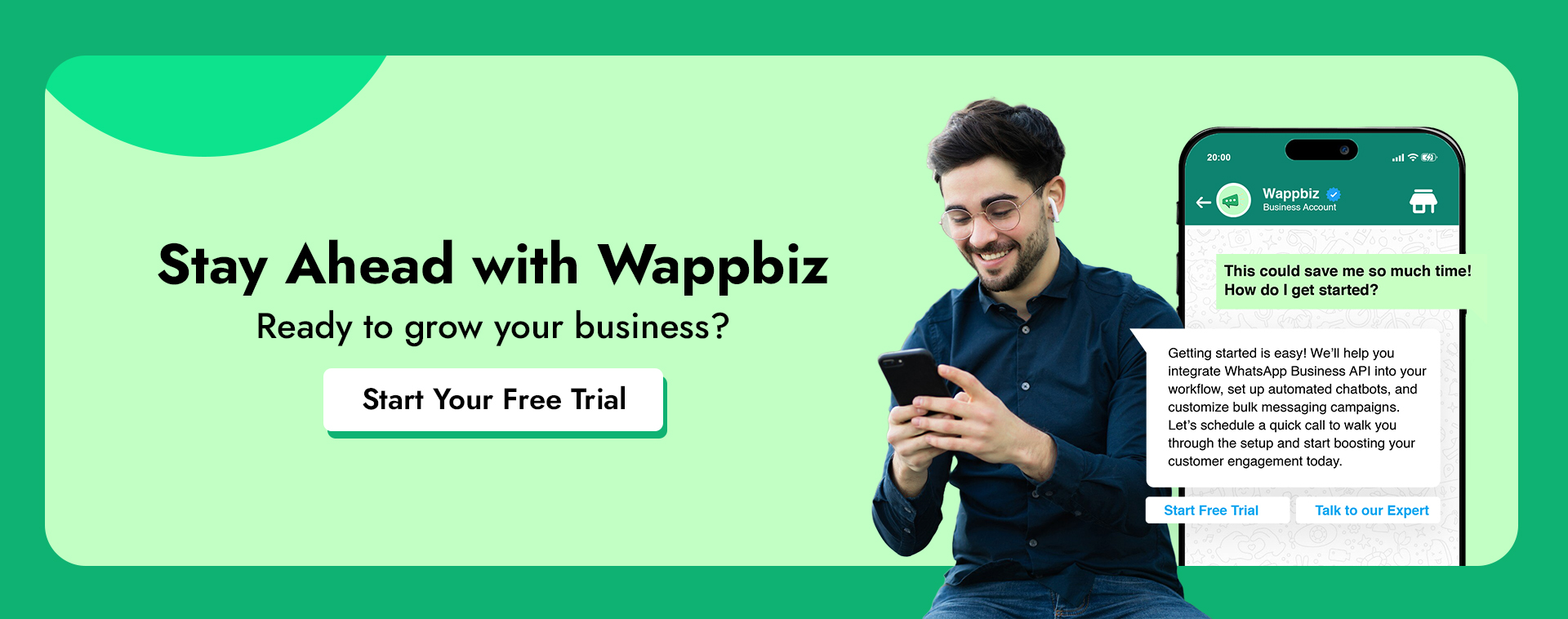
Conclusion
The Frequency Cap feature update is a major change which urges brands to be more considerate and tactical towards their WhatsApp marketing campaigns. Though this step aims at improving the user experience by minimizing message clutter, it comes as a challenge for businesses that depend on mass messaging for engagement and conversions.
The Broadcast Auto-Retry feature from Wappbiz allows businesses to easily avoid this problem. In those stage times, any other messages that get failed because of frequency capping get sent back automatically at the right intervals with no manual involvement of the operator due this intelligent automation. This ensures that you have a steady flow of communication with your audience, resulting in higher engagement, better retention, and increased conversions.
Since optimized delivery rates directly affect overall campaign efficacy, Broadcast Auto-Retry is a great valuable tool for businesses looking to get the most out of their WhatsApp marketing. In an ever-evolving marketplace, making sure that your messages land with your targeted audience fast enough can make all the difference between an ok campaign and a great one.
Here is the official documentation by Meta regarding frequency Capping.
FAQ’s
Does Frequency Capping apply to all users?
No, frequency capping is mainly for business-initiated messages via WhatsApp Business API and does not apply on personal messages.
What types of messages are limited by Frequency Capping?
Promotional messages, bulk messages and aggressive follow-ups are impacted while transactional and utility messages are mostly unaffected.
Can utility messages with promotional content be affected?
Yes, utility messages that contain promotional elements are subject to frequency capping.
Will Meta provide an error message for failed messages?
Yes, if a message was blocked as a direct result of exceeding frequency limits, then Meta will notify the business with an error message.

